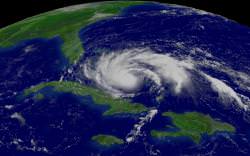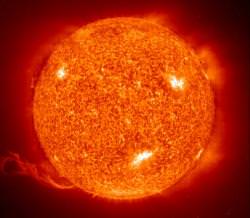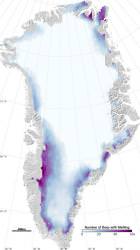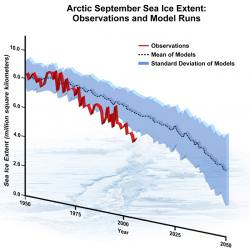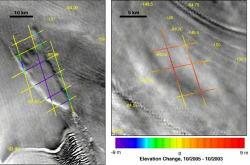Researchers are reporting that the frequency of Atlantic hurricanes has doubled over the last century. 100 years ago, the Atlantic saw 6 severe storms a year, and now it experiences 15. The study concludes that warmer sea surface temperatures are to blame; changing wind patterns from global warming are fueling the increase in hurricanes.
This news comes from the most recent issue of the journal Philosophical Transactions of the Royal Society of London. The study is written by Greg Holland of the National Center for Atmospheric Research (NCAR) in Boulder, Colo., and Peter Webster of Georgia Institute of Technology.
The researchers identified three periods since 1900, separated by sharp transitions, where the average number of hurricanes and tropical storms increased dramatically, and then remained at this new plateau. The first period was between 1900 and 1930, with 6 major storms a year. From 1930 to 1940, the number increased to 10. And then it increased again to an average of 15 from 1995 to 2005.
The increases in storm frequency and severity match the levels of warmer surface sea temperatures, which have risen over the last century. As temperatures rise, this has created warmer ocean temperatures, fueling the storms. The article authors note that the rise in Atlantic Ocean temperatures have been attributed to global warming in many other studies.
This study goes on to discuss what role natural storm cycles might have in the increase they measured. They found that natural cycles can’t be the entire cause because the increase has happened over the last century, and hasn’t been oscillating in tandem with a natural cycle.
2006 might have seemed like a slow year for storms. Maybe today. But 100 years ago, it would have seemed normal, or even above average compared to average storm frequency.
Original Source: NSF News Release

